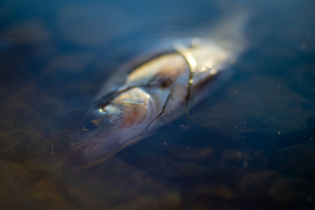An increasing number of mining companies are using reused water from residential or industrial areas. In addition, some mines are carrying out more on-site water recycling. Some mining companies are now also providing water indirectly to other sectors, including drinking water for local residential users.
A joint workshop on water reuse in the mining sector was hosted by the South African Water Research Commission, the International Water Association (IWA), and the World Business Council for Sustainable Development (WBCSD) at the 9th IWA Water Reuse Conference, Windhoek, on 29 October 2013. The workshop was designed to explore the multi-faceted challenges and opportunities of water reuse in and around the mining industry. It examined technical aspects of water reuse, discussed regulatory arrangements, considered the business case for greater water reuse and sustainable business models across sectors (industry-agriculture-municipal). Examples of mining companies already providing potable standard water to municipalities include Glencore’s Optimum Water Reclamation Plant in Middleburg, situated 30 km south east of Middelburg in the Lower Olifants River Catchment. This mine releases clean drinking water to the Steve Tshwete Local Municipality. eMalahleni Water Reclamation Plant is also located in Mpumalanga and operated jointly by BHP Billiton and Anglo American employs advanced treatment technology and disinfection to supply drinking water to the town of eMalahleni. According to the Department of Water Affairs’ recently released National Water Resource Strategy 2013, reuse of water is becoming more technically and economically feasible, because of the increasing need to diversify the sources of water utilised in South Africa. Dr Jo Burgess, research manager at WRC says, “Improvements in membrane technologies and their increased affordability have made a significant contribution to the feasibility of water reuse in recent years. At present, it is estimated that 14% of water used is now directly reused, yet reuse of return flows to rivers can be significantly increased, particularly in coastal cities where wastewater ordinarily drains into the sea”.According to the WBCSD and IWA it is estimated that 80% of used water is discharged back to the natural environment without any treatment, which reduces the potential for the water it is polluting to be used effectively. The workshop identified a need for the technology for water reuse to be packaged in a wider context, with a holistic approach to local solutions.
The newly published WRC report entitled ‘Implementation plan for direct and indirect water re-use for domestic purposes: sector discussion document’ highlights that South Africa faces a challenge of ‘unplanned or incidental’ water reuse with indiscriminate releases of poorly treated wastewater into the environment. This affects the downstream water uses as raw water is not fit for domestic use and needs to be treated at a wastewater treatment plant before it is discharged. While reflecting on the workshop discussions, Dr Jo Burgess also explained that there is still a need to follow up and engage with the mining community in southern Africa, to encourage a stronger emphasis on extending smart solutions and new approaches. There is also a need to increase public awareness and education, for example in the water cycle, water use hierarchy, resource efficiency/recovery and water reuse through multi-industries forums and cross-sector sharing. A WRC report (no.KV 320/13), entitled “Implementation plan for direct and indirect water re-use for domestic purposes: sector discussion document” can be downloaded for more information on water reuse. Contact: WRC Research Manager, Dr Jo Burgess email: job@wrc.org.za or Tel:012 330 0340






